
About Online Information and Database Access or Retrieval (OIDAR) services:
- It is a category of services provided through the medium of the internet, and received by the recipient online without having any physical interface with the supplier of such services.
- OIDAR services, delivered over the internet or electronic networks, are highly dependent on information technology and include offerings such as cloud services, digital content, online gaming, and online advertising.
- When such services are provided by an offshore entity to a non-taxable recipient, the supplier becomes liable for obtaining registration and discharging GST on the same.
- Criteria to determine an OIDAR Service
- These are the services whose delivery is mediated by information technology over the internet/electronic network and Services are automated and impossible to ensure in the absence of internet technology.
- Currently, as many as 574 offshore entities providing OIDAR Services have registered themselves with the GST department, and annual revenue from this sector has increased from Rs 80 crore for the FY 2017-18 to Rs 2,675 crore for 2023-24 fiscal.
- According to DGGI in its annual report noted that since the OIDAR service providers are located abroad it becomes a challenge in GST enforcement and hence the sector remains relatively untapped and holds tremendous revenue potential.
2. Karam Festival
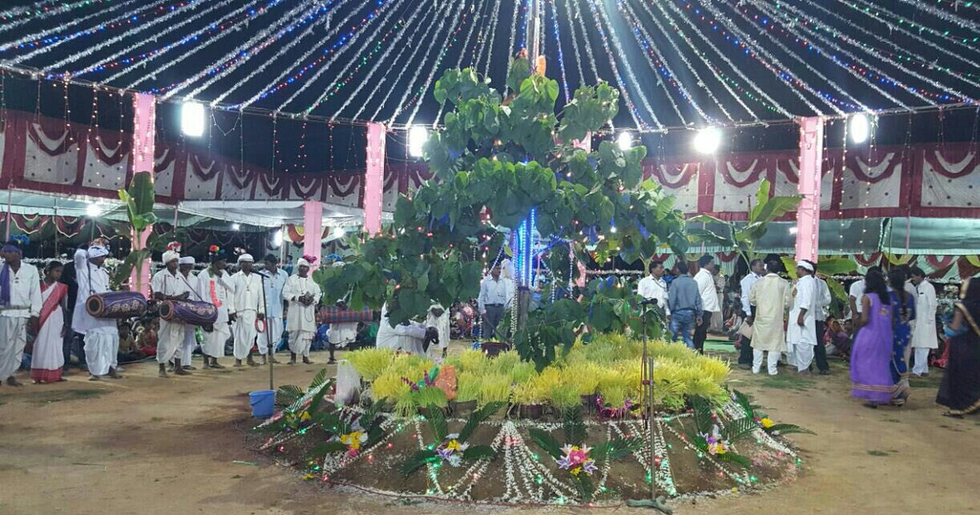
About Karam Festival:
- Karma Puja, one of the most popular festivals, is related to the harvest and a tribute to the Karam tree. This tree symbolises fertility, prosperity and everything that is auspicious.
- Origin: The origin of the festival can be traced to the beginning of agriculture by tribal communities.
- How is it celebrated?
- About a week before the festival commences, young women bring clear sand from the river, in which they sow seven types of grains.
- On the day of the festival, a branch of the Karam tree is planted in the courtyard or ‘akhra’.
- Devotees come with jawa (hibiscus) flowers, and the pahan (priest) worships the Karam Raja. Dancing and singing of traditional Karam songs follow.
- The festival concludes with the immersion of the Karam branch in a river or pond, and the jawa is distributed among the devotees.
- Towards the end of the Karam festival, branches from sal or bhelua trees are often planted in the fields with the hope that the Karam Raja/ Devta will protect their crops.
- It is traditionally celebrated on the Ekadashi tithi (eleventh day) of the lunar fortnight in the month of Bhado/ Bhadra, which corresponds to August-September in the Gregorian calendar.
- The festival is popular especially among the Munda, Ho, Oraon, Baiga, Kharia, and Santhal peoples.
- It is mainly celebrated in Jharkhand, West Bengal, Bihar, Madhya Pradesh, Chhattisgarh, Assam, and Odisha.
3. Seaweeds
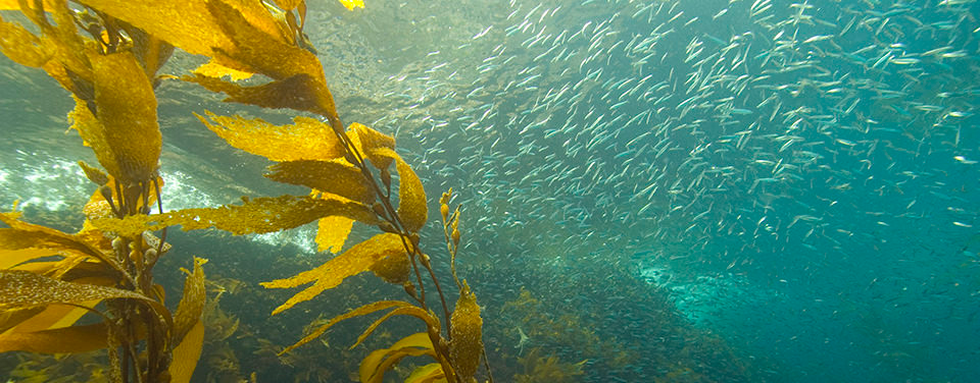
About Seaweeds:
- "Seaweed" is the common name for countless species of marine plants and algae that grow in the ocean as well as in rivers, lakes, and other water bodies.
- They range in colours from red, green, brown and black and also vary in size, from microscopic to large underwater forests.
- Seaweeds are generally anchored to the sea bottom or other solid structures by rootlike “holdfasts,” which perform the sole function of attachment and do not extract nutrients as do the roots of higher plants.
- Many show a well-established zonation along the margins of the seas, where the depth of the water is 50 metres (about 165 feet) or less.
- Uses:
- A number of seaweed species are edible, and many are also of commercial importance to humans.
- Some are used as fertilizers or as sources of polysaccharides.
- High amount of antioxidants present in seaweed protects the body from damages caused by free radicals and protect cells from their impact.
- Animal studies have found that substances found in seaweed help increase the production of a protein that metabolises fat effectively.
- Research suggests that consuming seaweed can help in managing diabetes by balancing the sugar levels in the blood.
- Many seaweeds contain anti-inflammatory and anti-microbial agents.
- They are effective binding agents (emulsifiers) in such commercial goods as toothpaste and fruit jelly, and popular softeners (emollients) in organic cosmetics and skin-care products.
4. SUBHADRA Scheme
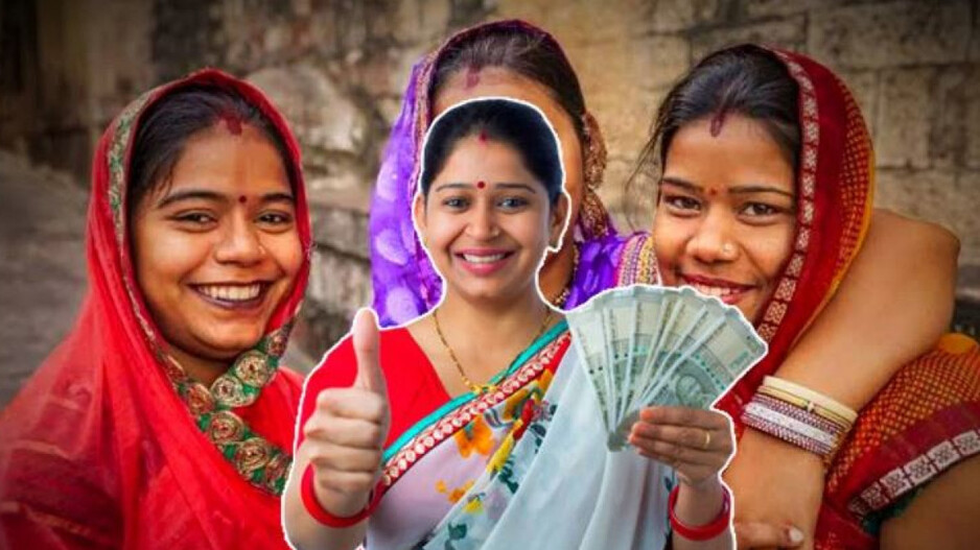
About SUBHADRA Scheme:
- It is named after Goddess Subhadra, the younger sibling of Lord Jagannath, the presiding deity of Odisha.
- All eligible beneficiaries between the age of 21-60 years would receive Rs. 50,000/- over a period of 5 years between 2024-25 to 2028-29.
- An amount of Rs 10,000/- per annum in two equal installments will be credited directly to the beneficiary’s Aadhaar-enabled and DBT-enabled bank account.
- How will it work?
- The money will be deposited directly into the beneficiary’s Aadhaar-enabled single-holder bank account.
- The government has made e-KYC mandatory for the scheme. A Subhadra Debit Card will be issued to the beneficiaries.
- A total 100 beneficiaries with the highest number of digital transactions in each gram panchayat and urban local body area will receive an additional incentive of Rs 500.
- Women from economically well-off families, government employees, and income-tax payees will not be eligible for the scheme.
- Women who receive assistance of Rs 1,500 or more per month (or Rs 18,000 or more per year) under any other government scheme will also be excluded.
- There is no last date to register; the process will continue until all eligible beneficiaries have been registered.
5. Key Facts about Rapa Nui
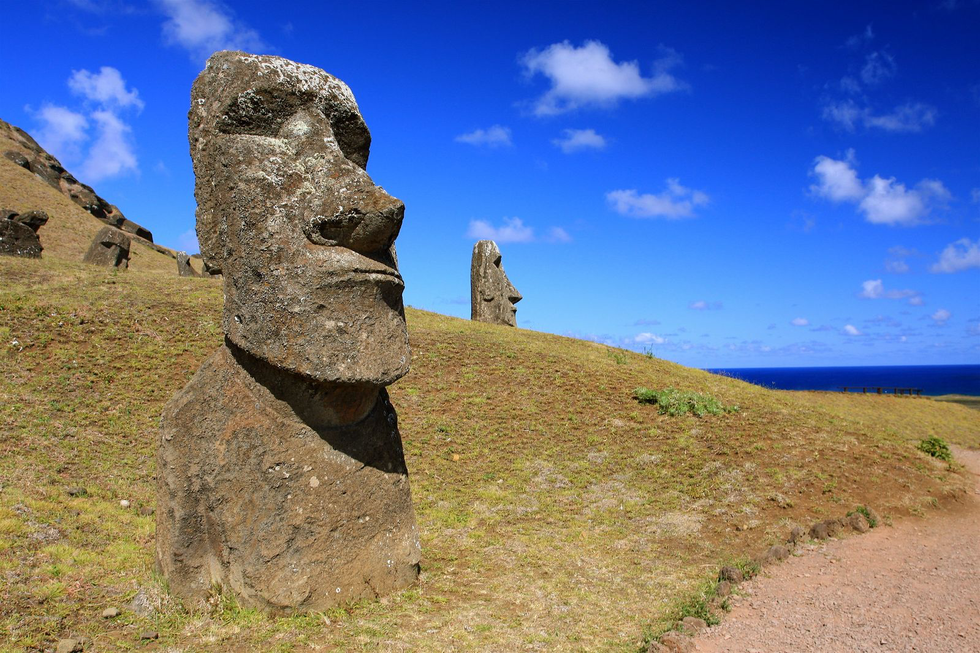
About Rapa Nui:
- Rapa Nui, also known as Easter Island, is a Chilean dependency in the southeastern Pacific Ocean.
- It is the easternmost outpost of the Polynesian island world.
- It is situated about 3,540 km to the west of Chile and about 1,900 km to the east of Pitcairn Island.
- Covering a total area of 163.6 sq.km., it is one of the most remote inhabited places in the world.
- It is a small, triangular-shaped volcanic island. It is about 24 km in length and has a maximum width of about 12 km at its widest point.
- It faces a tropical rainforest climate.
- UNESCO named Easter Island a World Heritage Site on March 22, 1996, and major parts of the island have been protected under the Rapa Nui National Park.
- What are Moai Statues?
- Rapa Nui is famous for its large statues called moai.
- They are shaped like large human heads and erected on stone pedestals.
- They are famous for their carved heads and "Pukao," a hat-like covering made from a soft red stone.
- Some moai stand 40 feet tall and weigh 75 tonnes.
- They were carved in volcanic stone at quarries and then moved to their current locations across the island.
- Scholars believe the Rapa Nui people built the moai between the 13th and the 16th centuries and represented their revered ancestors.
- Over 900 moai have been found on the island to date.
6. Credit Guarantee Fund Trust for Micro and Small Enterprises (CGTMSE)
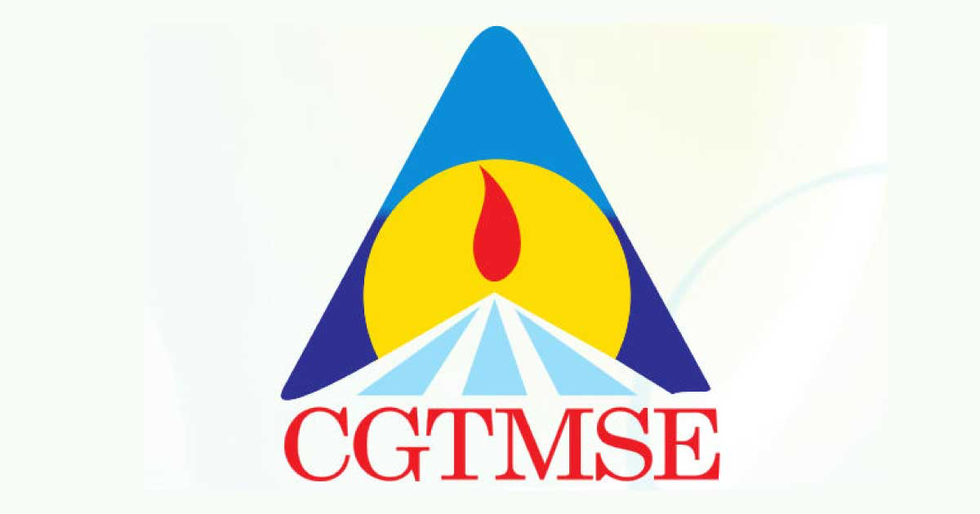
About Credit Guarantee Fund Trust for Micro and Small Enterprises (CGTMSE):
- The Union Ministry of Micro, Small & Medium Enterprises (MSME) started Credit Guarantee Scheme for Micro & Small Enterprises (MSEs) in the year 2000.
- Objective: To catalyze the flow of institutional credit to Micro & Small Enterprises (MSEs).
- The scheme was formally launched on August 30, 2000, and is operational with effect from 1st January 2000.
- The scheme aims to facilitate access to credit for the unserved and underserved MSE segment of the MSME Sector, making the availability of credit from conventional lenders to new generation entrepreneurs and underprivileged, that lack supporting their loan proposal with collateral security and/or a third-party guarantee.
- In order to implement the Credit Guarantee Scheme, CGTMSE was jointly set up by the Union Ministry of MSME and Small Industries Development Bank of India (SIDBI).
- Funding: The corpus of CGTMSE is being contributed by the Government of India and SIDBI in the ratio of 4:1.
- Eligible Lending Institutions:
- Scheduled commercial banks (Public Sector Banks/Private Sector Banks/Foreign Banks) and select Regional Rural Banks (which have been classified under the 'Sustainable Viable' category by NABARD).
- National Small Industries Corporation Ltd. (NSIC), North Eastern Development Finance Corporation Ltd. (NEDFi), SIDBI, selected Small Finance banks, and NBFCs have also been made eligible institutions.
- Eligible Credit Facility:
- CGTMSE facilitates collateral free credit support of upto Rs. 5 crores to MSEs, extended by the CGTMSE’s Member Lending Institutions.
- The extent of guarantee cover is 85% for microenterprises for credit up to Rs. 5 lakhs. For credit ranging from Rs. 5 lakhs to Rs. 500 lakhs, the extent of guarantee cover is 75%.
- The extent of guarantee cover is 80% for loans/credits in the North East Region (incl. Sikkim, UT of Jammu & Kashmir, and UT of Ladakh) for credits up to Rs. 50 lakhs. Above Rs.50 lakhs, guarantee cover is 75%.
- The extent of guarantee cover is 85% for MSMEs owned/operated by SC/ST entrepreneurs, Persons with Disabilities (PwDs), MSEs situated in Aspirational Districts, ZED certified MSEs and MSE promoted by Agniveers.
- Extent of guarantee cover is 90% for MSME owned/operated by women.
- For all other categories of borrowers, the Extent of guarantee cover is 75%.
- In cases of default, the trust settles the claim up to 75% (85%/80% wherever applicable) of the amount in default of the credit facility extended by the lending institution.
7. Windfall Tax

About Windfall Tax:
- It is a higher tax imposed on specific industries when they make unusual and above-average profits.
- The term “windfall” refers to an unexpected rise in profits, and the tax on windfall gains is known as the windfall tax.
- The increase in profits is not attributed to any expansion or investment strategy of a business but to a favourable external factor for which the business is not responsible.
- A windfall tax is levied on industries or businesses that make disproportionate profits during unexpected situations like commodity shortages, wars, pandemics, changes in government policy, etc.
- The most common industries that fall target to windfall gains tax include oil, gas, and mining.
- Some individual taxes—such as inheritance tax or taxes on lottery or game-show winnings—can also be construed as a windfall tax.
- Objective:
- The primary objective of windfall taxes is to appropriate a portion of these extraordinary profits, which are perceived to exceed normal returns, for the public good.
- Governments assert that these profits are not solely due to the taxed entity's efforts but also due to external factors, justifying the redistribution of such gains to benefit society as a whole.
- It is also used as a supplementary revenue stream for the government.
8. Necrotising fasciitis

About Necrotising fasciitis:
- Necrotizing fasciitis, also known as flesh-eating disease, is a rare and life-threatening bacterial infection that affects the tissue under the skin called fascia.
- "Necrotizing" means causing tissue death, and "fasciitis" refers to fascia inflammation, which is tissue under the skin.
- It includes two types:
- Type I, or polymicrobial: This type happens when more than one bacteria, usually a mix of aerobic and anaerobic bacteria, causes the infection.
- Type II, or monomicrobial: The monomicrobial form is typically caused by one bacteria, group A streptococcus or Staphylococcus aureus bacteria.
- The infection may get into the body through:
- cuts and scratches
- burns and scalds
- insect bites
- surgery
- injecting drugs
- It is a form of necrotizing soft tissue infection (NSTI). These life-threatening infections affect the skin, muscles, and soft tissue and cause patches of tissue to die.
- Necrotising fasciitis infection typically travels along the fascial plane, which has a poor blood supply, leaving the overlying tissues initially unaffected, potentially delaying diagnosis and surgical intervention.
- It spreads quickly and aggressively in an infected person, causes tissue death at the infection site, and can be deadly if not treated right away.
- Symptoms:
- Early symptoms of this condition include signs and symptoms that resemble those of the flu.
- Later signs and symptoms include Reddened and/or discolored skin, Swelling of affected tissues, Unstable blood flow, Blisters filled with bloody or yellowish fluid, Tissue death (necrosis), Low blood pressure, Sepsis, etc.
- Treatment:
- Currently, there isn’t a vaccine to prevent necrotizing fasciitis.
- It’s treated with antibiotics and surgery to remove damaged tissue.
9. Bhitarkanika National Park
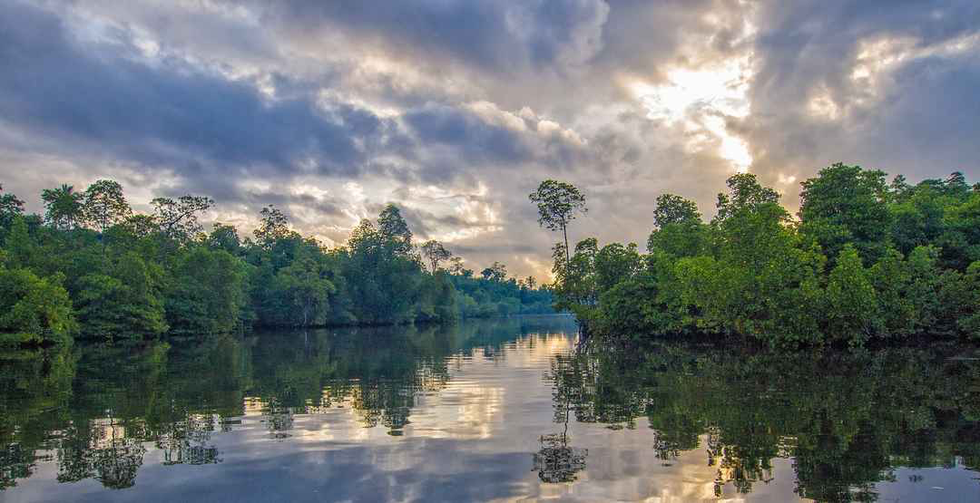
About Bhitarkanika National Park:
- Location: It is located in the Kendrapara district of Odisha.
- It lies at a rich delta made by the Brahmani, Baitarani, and Dhamara rivers.
- It comprises vast mangrove forests, meandering rivers, and creeks leading to tidal deltas.
- Spread over a vast area of 672 sq.km., it is the second largest mangrove ecosystem in India.
- Proximity to the Bay of Bengal makes the soil of the area enriched with salt; the vegetation and species of the sanctuary are comprised of those that are mainly found in the tropical and subtropical intertidal regions.
- It is also designated as the second Ramsar site in Odisha after the Chilika Lake.
- Flora: Mangrove species, casuarinas, and grasses like the indigo bush.
- Fauna:
- It is home to the largest congregation of the endangered Saltwater Crocodile in the country.
- The Gahirmatha Beach, which forms the boundary of the park in the east, is the largest colony of the Olive Ridley Sea Turtles.
- It is also home to numerous animals like hyenas, wild boar, Chitals, Sambar, Spotted Deer, Wild Boar, Jungle cat, Wild Pigs, etc., and migratory birds, which make it their home during the winter season, lending a vibrant hue to the ecosystem.


























































































































































.png)
.png)
.png)
.png)
.png)


.png)
.png)
.png)





.png)
.png)






.png)
.png)
.png)
.png)
.png)
.png)
.png)
.png)
.png)

.png)







.png)
.png)


.png)
.png)
.png)


.png)

.png)
.png)





.jpg)

.png)
.png)


.png)

.png)
.png)
.png)

.jpg)

.jpg)


.png)

.png)
.png)
.png)
.png)
.png)
.png)
.png)
.png)
.png)
.png)




.png)

.png)





.png)
.png)
.png)
.png)
.png)
.png)
.png)
.png)
.png)
.png)
.jpg)
.jpg)

.png)
.png)
.png)
.png)
.png)
.png)
.png)
.png)
.png)
.png)
.png)
.png)
.png)
.png)
.png)
.png)
.png)
.png)
.png)
.png)
.png)
.png)



.png)
.png)

.jpg)
.jpg)


.jpg)
.jpg)
.jpg)
.jpg)
.jpg)

.jpg)








.jpg)
.jpg)
.jpg)
.jpg)
.jpg)

















.jpg)
.jpg)







.jpg)


















.jpg)
.jpg)






























































































.jpg)
.jpg)


























.jpg)

.jpg)










.jpg)








.jpg)




.jpg)










.jpg)


















.jpg)












































.jpg)














.jpg)
.jpg)
.jpg)





.jpg)

.jpg)
.jpg)





































































.jpg)


































.jpg)
.jpg)
















































.jpg)












.jpg)


.jpg)




.jpg)
.jpg)
.jpg)

.jpg)
.jpg)
.jpg)
.jpg)

.jpg)
.jpg)
.jpg)

.jpg)
.jpg)
.jpg)
.jpg)
.jpg)
.jpg)
.jpg)
.jpg)

.jpg)


.jpg)
.jpg)
.jpg)
.jpg)
.jpg)
.jpg)
.jpg)
.jpg)
.jpg)
.jpg)











.jpg)
.jpg)





.jpg)
.jpg)
.jpg)
























.jpg)
























.jpg)









.jpg)
.jpg)







.jpg)
.jpg)









































.jpg)
.jpg)
.jpg)
.jpg)
.jpg)

.jpg)
.jpg)
.jpg)
.jpg)
.jpg)


.jpg)
.jpg)
.jpg)
.jpg)
.jpg)

.jpg)
.jpg)
.jpg)
.jpg)
.jpg)
.jpg)
.jpg)
.jpg)
.jpg)
.jpg)
.png)

.png)
.png)

.png)
.png)
.png)
.png)


.jpg)
.jpg)

.jpg)
.jpg)
.jpg)

.png)
.png)
.png)
.png)
.png)
.png)
.png)

.png)
.png)
.png)
.png)
.png)
.png)
.png)
.png)
.png)
.png)





































































-min.png)



.png)




.png)








































